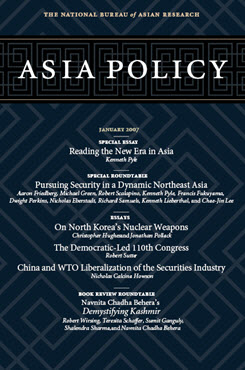North Korea's Nuclear Weapons Program to 2015
This essay evaluates three alternative scenarios for North Korea’s nuclear weapons development over the coming decade: (1) pursuit of a symbolic nuclear capability, (2) pursuit of an operational nuclear deterrent, and (3) a deficient or failed effort to achieve an operational capability.
EXECUTIVE SUMMARY
MAIN FINDINGS
North Korea’s weapons are now a fact, not a bargaining chip. Absent fundamental internal change in North Korea or extraordinary changes in the negotiating strategies of the U.S. and other powers, there is virtually no possibility that North Korea will irrevocably yield the totality of these capabilities. Given that Pyongyang still confronts major technical hurdles if it expects to proceed to an operational deterrent force, however, the most likely outcome would be a symbolic nuclear capability. North Korea may be prepared to restrict some nuclear activities in return for guarantees and commitments from the U.S. and other powers. Even if such a move would not entail a definitive end to the program, this possibility warrants careful consideration by the U.S. and others seeking a negotiated end to Pyongyang’s nuclear program. It would not be prudent, however, to anticipate an early end to Pyongyang’s program or to the dangers this program poses both for security in East Asia and for the future viability of the non-proliferation regime.
POLICY IMPLICATIONS
There are four immediate policy considerations that the international community would benefit from exploring:
- determining additional measures to discourage or impede North Korea’s future weapons development, which in the near term should focus on convincing North Korea to forego additional nuclear tests or further tests of ballistic missiles
- reiterating to Pyongyang that any transfer of nuclear materials, technologies, or completed weapons outside its borders would constitute a grave danger to the international community as a whole
- imposing additional costs on North Korea for any further nuclear tests
- fully weighing the trade-offs in pursuing partial steps to restrict nuclear weapons development versus pursuit of maximal policy goals
About Asia Policy
Asia Policy is a peer-reviewed scholarly journal presenting policy-relevant academic research on the Asia-Pacific that draws clear and concise conclusions useful to today’s policymakers. Asia Policy is published quarterly in January, April, July, and October and accepts submissions on a rolling basis. Learn more


